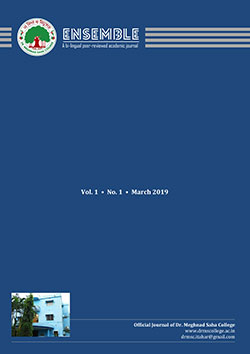Spatial Distribution And Concentration: A Study Of The Higher Educational Institutes In West Bengal
Abstract
The distribution of the higher educational institutions to a great deal affects the access and enrolment of the surrounding population to higher education, whether urban-centric or rural-centric. On the other hand, the concentration gives a picture of the undersupply or oversupply of Higher Educational Institutes of a place. There exist regional inequalities in the development of Higher Educational Institutes of West Bengal which in the long run may come as a blow to the idea of knowledge centric development and detrimental to the once legacy of the state having been the precursor of modern day higher educational institutions. The number of colleges in West Bengal is 1371, with a college density of 13 colleges per lakh population and 25 universities. The paper analyses the spatial distribution and concentration of the Higher Educational institutes with various other indicators and how these indicators together give a specific development pattern to the districts. Accordingly, Kolkata has the highest development pattern and Uttar Dinajpur the lowest. It is also seen that despite the levels of development, the districts still have prospects of growth either in number of institutes or students based of the Average Size of the institutes. The paper is totally based on secondary data from the Census of India, All India Survey on Higher Education Reports and University Directory, University Grants Commission.
Keywords: Density of Higher Educational Institute, Average Size of the Institute, Concentration Ratio, Share of Enrolment, Development Pattern.
https://doi.org/10.37948/ensemble-2021-0301-a006
Views: 923



